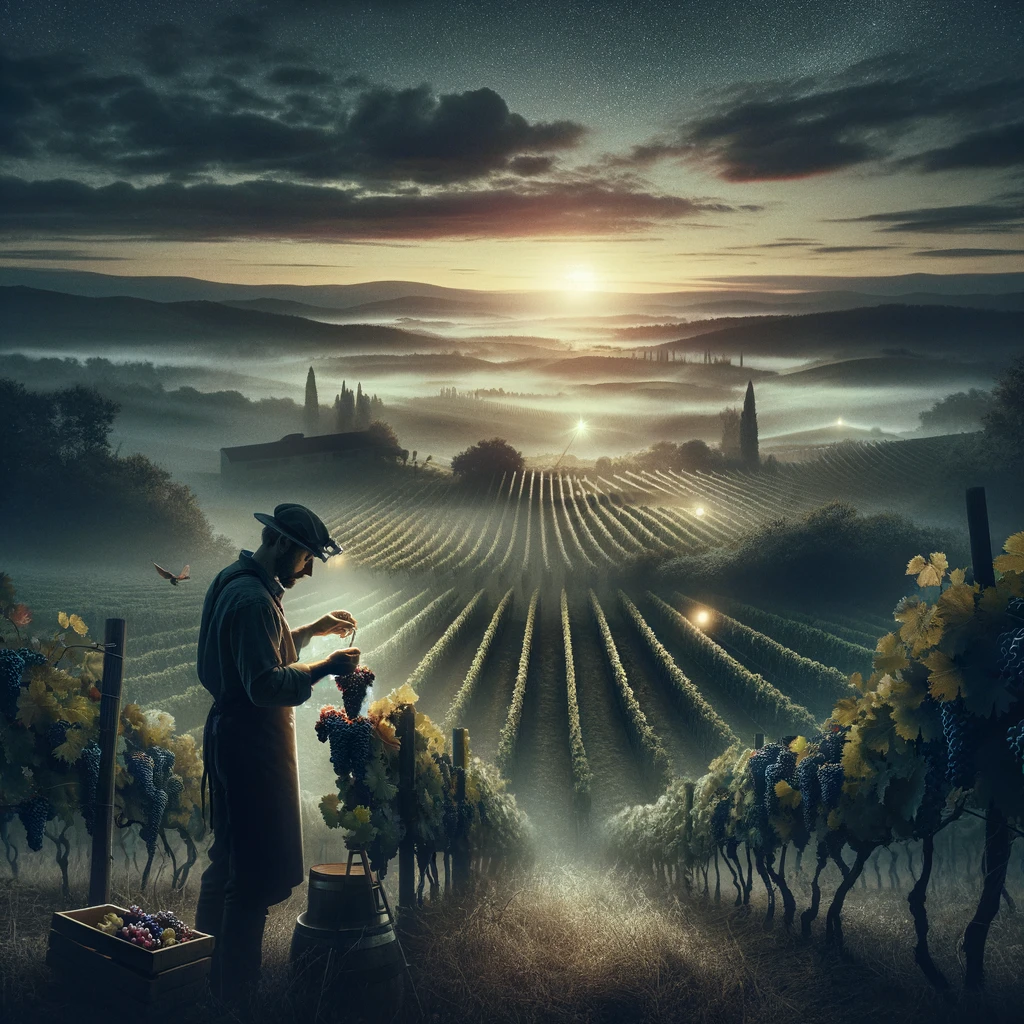What is Natural Wine?
Last summer, during my tour of the Pays Nantais & Saumur wine regions, I would ask the vignerons the same question: how exactly does a biodynamic wine differ from an organic or natural wine? Their answers ranged from technical to esoteric. All were amusing. Some were bizarre. None settled the matter.
What is Organic Wine?
Organic wine seems the most straightforward label to define because it’s the most regulated, so let’s start here. In France (and the EU), for instance, organic (or Biologique) means that the raw material (grape/yeast) and the process (winemaking) shouldn’t be chemically manipulated.
In other words, winemakers cannot use any pesticides or fertilizers and should limit the use of preservatives or additives (e.g., sulfites) to obtain the coveted EU “AB” label (AB stands for Agriculture Biologique). Such EU specifications are meticulously detailed (e.g., sulfites, again, should not exceed 100 milligrams per liter for red and 150 milligrams per liter for white and rosé).
The catch, however, is that as consumers demand more of these sustainable, small-production organic wines, conventional winemakers adopt some, but not all, of the techniques of those in the organic wine trade, blurring the lines between what is and is not organic wine. This is a competitive marking practice that otherwise forces the French & EU authorities to categorize further and limit what wine is organic.
It’s a vicious circle. One recurrent area of concern, for example, is again the permissible level of sulfites, the reduction of which sometimes stands as a proxy for what is more organic and which keeps shrinking to such imperceptible concentrations that even the most sustainable winemakers I met question its relevancy as a marker for truly organic wines.

Natural Wine
The few natural winemakers I tracked down in the Saumur wine region were like experimental archaeologists constantly foraging for ancestral grapes, yeast, and winemaking techniques.
Sulfite-free has also become the badge of honor for the more radical natural wine movement, which had started as an ’80s fringe group of anarchists in the Loire Valley who would make unfiltered, unaltered wines using only indigenous grapes and yeast – the minimum. But the resulting wines became so famous for their punk-like austerity that the winemakers, some of whom even identified as punks and had their manifesto, obtained their certification in March 2019.
Their new “Vin Méthode Nature” label is way more restrictive than organic wine, prohibiting sulfites (at least before and during fermentation) or other additives. But I don’t think this new certification grasps the entirety of what defines a natural wine.
For instance, the few natural winemakers I tracked down in the Saumur wine region were like experimental archaeologists and landscape historians, constantly foraging for ancestral grapes, yeast, and winemaking techniques. In their atavistic quest for what they call the original taste of a grape, they cultivated crude, solid, and capricious wines, with no efforts to push forward any pleasant fruity or floral fingerprints.
Biodynamic Wine
Biodynamic wine takes this back-to-the-land philosophy further but with a strange New Age bent. The recognized biodynamic wine label Demeter defines biodynamic as an integrative farming practice that should respect, heal, and honor the Earth.
Under this Gaia-hypothesis-like philosophy, the vineyard is a living organism, and its biodiversity – the soil, vines, and other native plants – should be preserved and regenerated by following the sun’s and moon’s cycles or by using plant compost or manure to detoxify the Earth.
Such peculiar and unregulated principles stem from the 1920s-era philosophy of Austrian scientist Rudolph Steiner. He pioneered sustainable farming values to combat the new intensive farming practices of the day, such as introducing modern fertilizers and pesticides. Steiner was also esoteric, so his techniques included a dose of magic.
Hence, when you interview biodynamic winemakers, they can sound like mystical Druids or shamans (which makes sense as the Pays Nantais draws from its Breton-Celtic heritage). One winemaker told me he would use his horse to till the land or sheep to get rid of weeds; another would synchronize the harvest with the tidal calendar (given the strategic proximity of the vineyard to the Atlantic ocean); yet another would use a fetid mixture of nettle as a substitute for pesticides.
But by far the most interesting (and accomplished) winemaker swore by the “dung of horn” (or bouse de corne), an annual ritual in which a cow horn is filled with organic cow dung, buried just after the winter solstice, and then dug up after the summer solstice and pulverized on the vineyard soil. What did this accomplish? I have no idea, but biodynamic wine is excellent.
More about Organic Wine
There are many organic wine brands, including Adastra Vineyards, Araujo Estate Winery, Beckstoffer Vineyards, and Clif Family Winery & Farm in Napa. In Sonoma, Benziger Family Winery and Hawley Vineyards are the leaders in organic wine. Locally (here in Chicago), you can buy organic wines at Diversey Wines, Independent Spirits, and Binny’s. No matter where you are, there is a wine shop that features these amazing wines.
References:
Commission Implementing Regulation (EU) No 203/2012 of 8 March 2012 amending Regulation (EC) No 889/2008 laying down detailed rules for the implementation of Council Regulation (EC) No 834/2007, as regards complex rules on organic wine:
https://eur-lex.europa.eu/legal-content/EN/TXT/?uri=celex%3A32012R0203
Terre de Vins Magazine, March 10, 2020: https://www.terredevins.com/actualites/la-denomination-vin-methode-nature-est-nee
Demeter, Agriculture Biodynamique: https://www.demeter.fr/biodynamie/
Fred Niger, Domaine de l’Ecu: https://domaine-ecu.com/la-biodynamie/


Pingback: The Ultimate Guide to Kosher Wine • Wine & Sommelier
Pingback: Natural Wine 101: All You Need to Know About this Growing Trend.